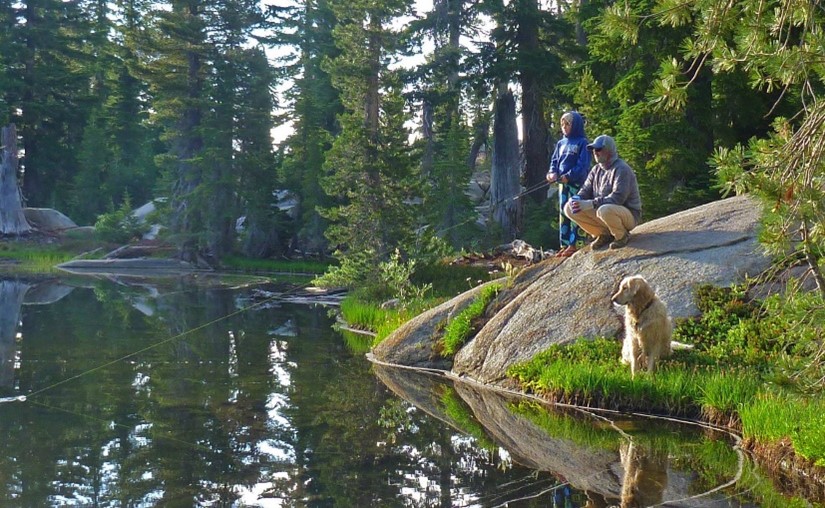Overview

Environmental conditions brought on by drought can affect fish in many ways. Biologically, fish experiencing elevated water temperatures and associated lower oxygen levels will be highly stressed and, in some situations, have elevated levels of mortality or disease. Low water conditions may also limit fish abilities to naturally migrate for spawning or to seek cooler water refuge. Fish species that rely on migration and rearing as part of their life cycle are especially at risk. These degraded environmental conditions brought on by drought are not just affecting coastal waters, but inland fish populations are also at significant risk. Coldwater species such as trout and salmon have the greatest likelihood of being affected by the drought this year, but low water levels and high water temperatures can potentially affect all inland aquatic species.
What are Hoot Owl recommendations?
CDFW is requesting that anglers voluntarily avoid fishing after 12:00 p.m. on select waters throughout California. This approach directs anglers to focus their angling during the cooler “hoot owl” periods of the day when water temperatures are lowest. These voluntary angling recommendations will be triggered by ongoing monitoring of select fisheries across California. When these select fisheries begin to achieve sustained afternoon water temperatures exceeding 67° Fahrenheit, CDFW will add the water(s) to a “Hoot Owl” watchlist below and will work with local stakeholders and CDFW staff to help with outreach to inform anglers. Although these are not legal angling closures, CDFW strongly recommends adhering to the recommendations for the specific waters listed until removed when conditions for those waters improve. Note: this list is not static and will be updated as conditions change with waters being added and removed.
Current Hoot Owl Waters
- Arroyo Seco River in Los Angeles County
- Bridgeport Reservoir in Mono County
- Crowley Lake in Mono County
- Deep Creek in San Bernardino County
- East Fork San Gabriel River in Los Angeles County
- Lower American River in Sacramento County
- Middle Piru Creek (Frenchman’s Flat Area)
- Mill Creek (Walker Basin) in Mono County
- Truckee River (Lake Tahoe to the Nevada state line) in Nevada, Placer and Sierra counties
- Upper Truckee River in El Dorado County
- West Fork San Gabriel River in Los Angeles County
What else can anglers do to help our fisheries during a drought year?
Many fish species will often search out cold water refuges during elevated temperatures, which could include deeper water, spring seeps or cold-water tributaries. Anglers should avoid fishing these refuge areas if fishing results in moving fish across a temperature gradient greater than 10° Fahrenheit, as this can result in increased angling-based mortality. Although this may not be an issue for anglers interested in harvesting fish, the resulting mortality may affect non-targeted species or fish outside of the legal size limits.
Angling Tips for Decreasing Fish Stress
- Minimize the time you spend "fighting" the fish and any hands-on handling.
- Use rubber or coated nylon nets to protect a fish's slime layer and fins.
- Quickly remove the hook with forceps or needle-nosed pliers.
- Minimize the amount of time the fish is exposed to air, especially when the weather is warm. Keep your hands wet when handling the fish.
- If the fish is deeply hooked, do not pull on the line. Instead, cut the line as close as possible to where it is hooked and leave the hook.
- Allow the fish to recover in the net before you release it.
- If the fish does not stay upright when you release it, gently move it back and forth.
- Avoid fighting fish from deeper, cooler waters and bringing them into warmer waters at the surface.
- Target fisheries that have stable water levels or species that are more resilient to elevated temperatures.